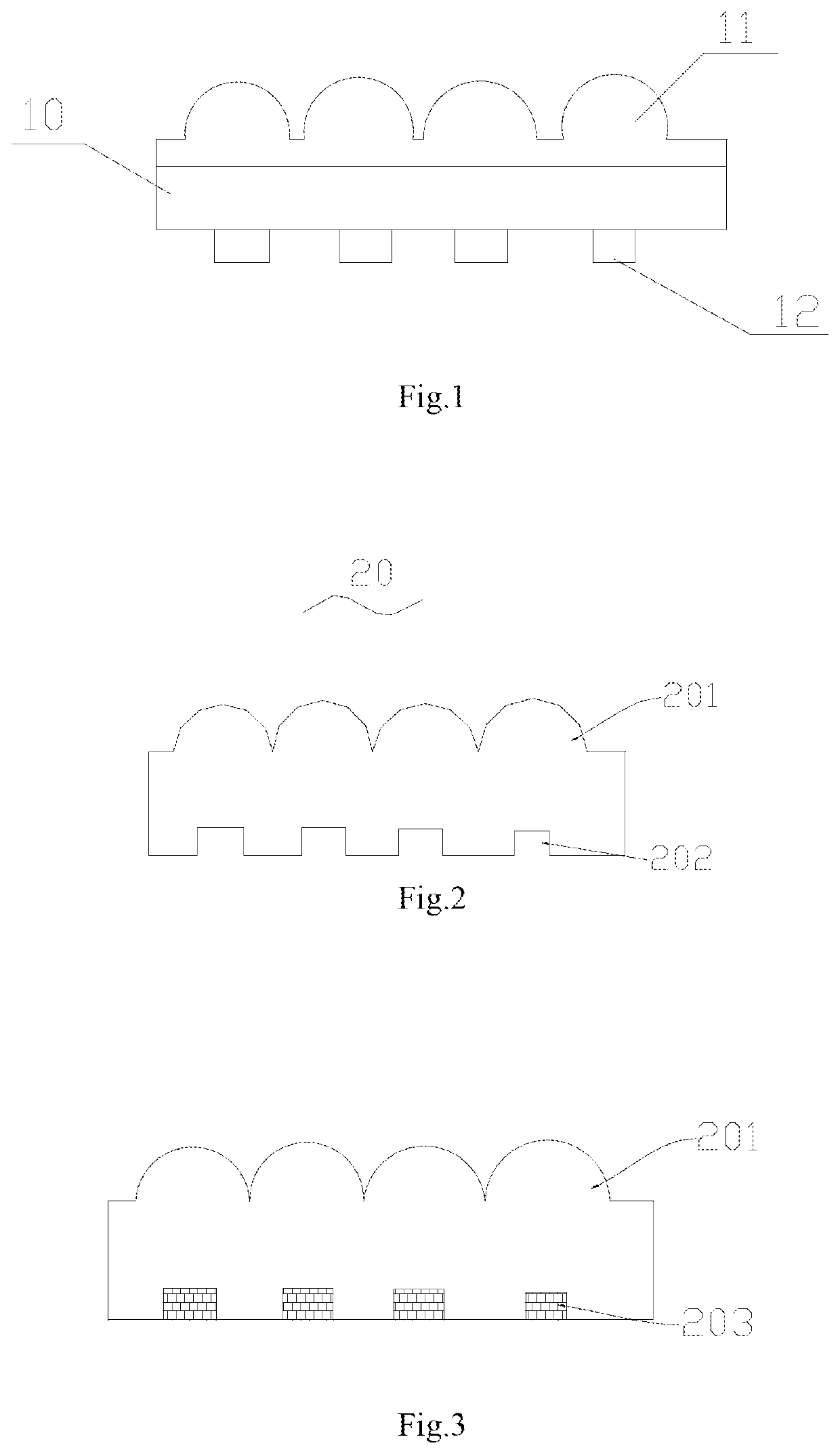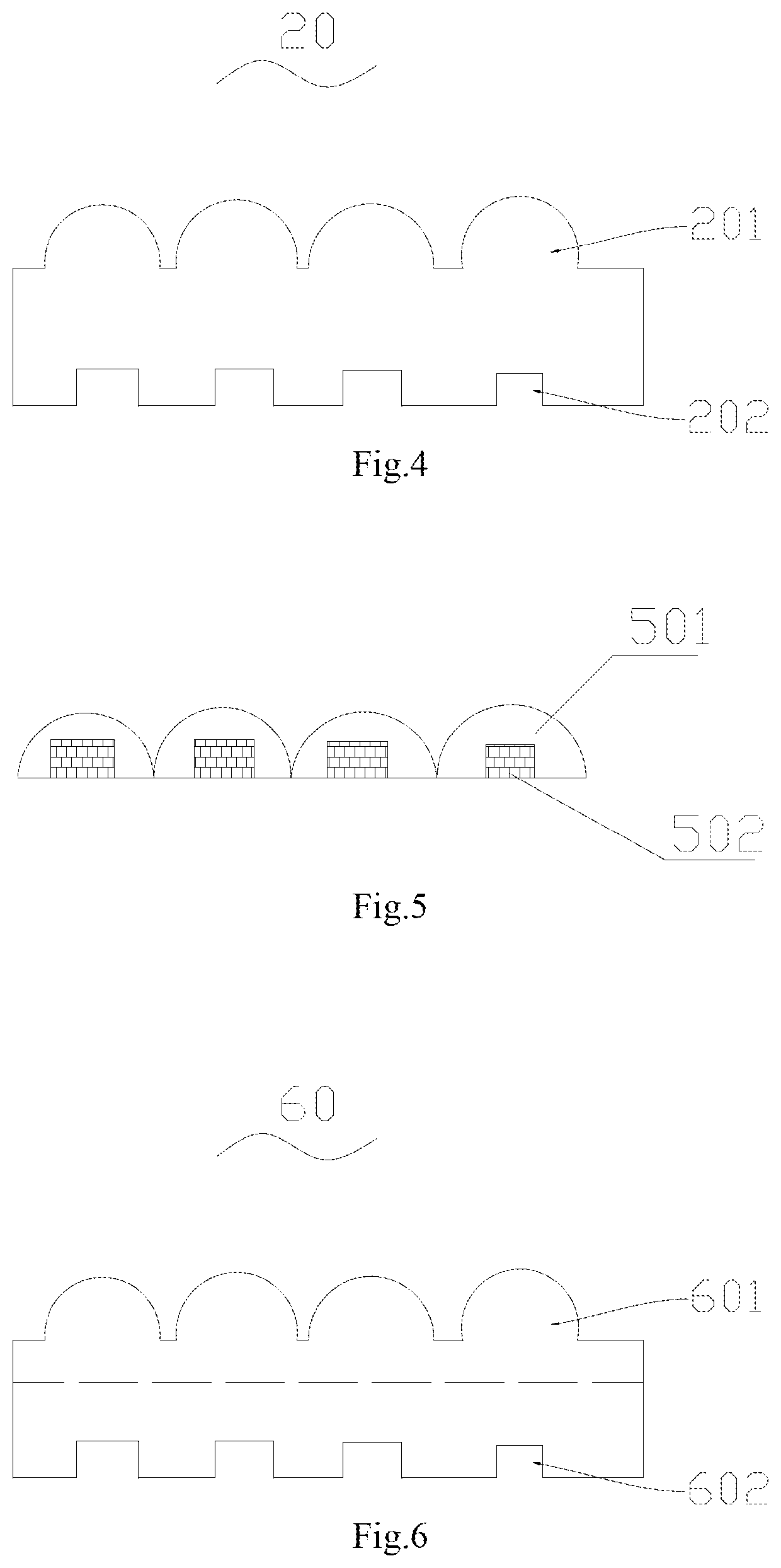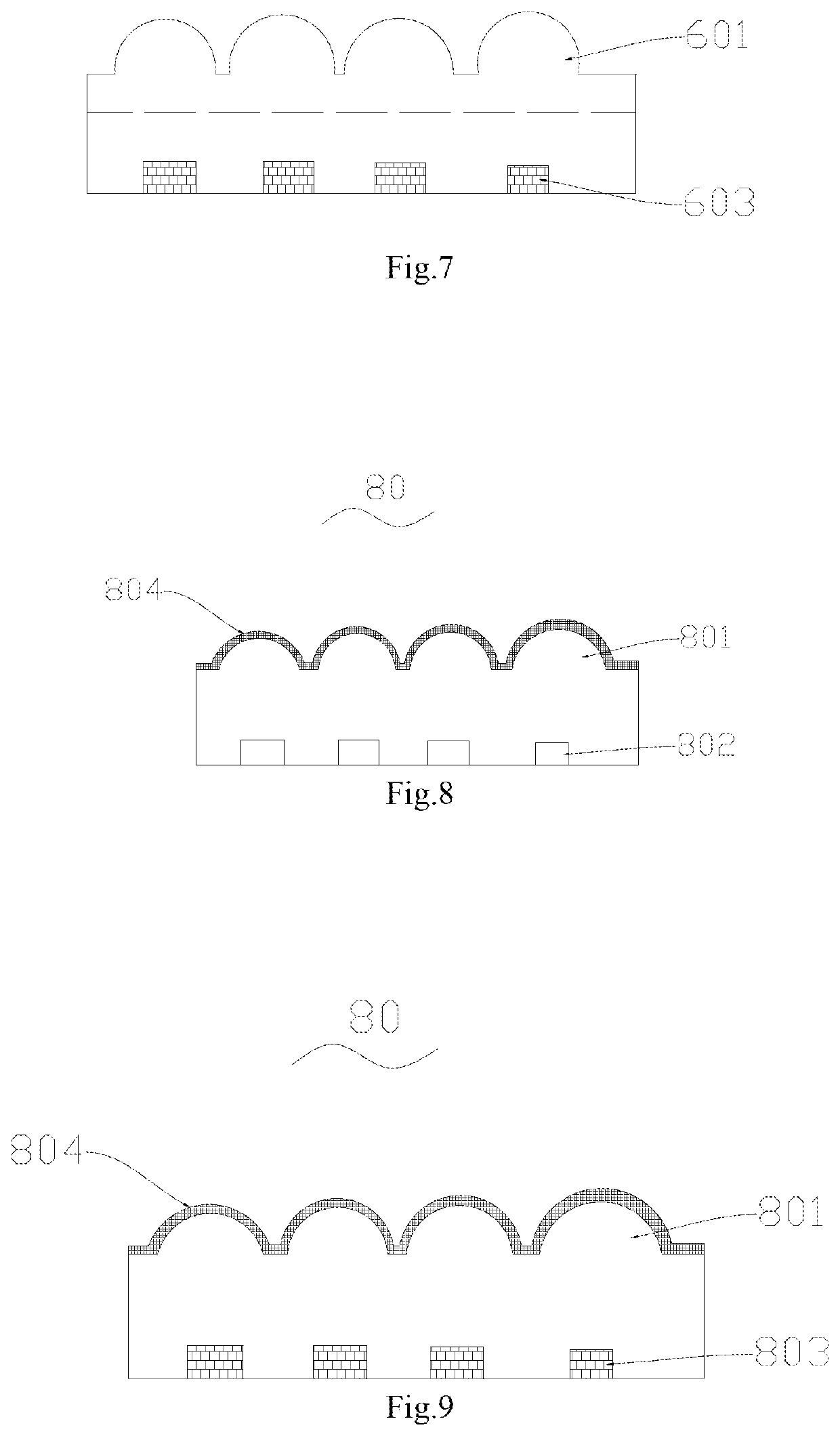Optical film
a technology of optical film and film film, applied in the field of optical film, can solve the problems of large thickness of imaging film, difficult to cut imaging film in thermoprinting, and low resolution, and achieve the effects of good light collection ability, good adaptability and weather resistan
- Summary
- Abstract
- Description
- Claims
- Application Information
AI Technical Summary
Benefits of technology
Problems solved by technology
Method used
Image
Examples
embodiment 1
[0158]Referring to FIG. 17a, a schematic diagram of a structure of a 3D floating imaging optical film is shown. The film is of a structure having three layers: a transparent spacer layer 10, a 2D micro-focusing unit array layer (or a micro-focusing unit array) 11 and a micro graphic and text unit layer (micro graphic and text units) 12, micro-focusing units 13 and micro reflective units (or a micro reflective structure) 14 being on the 2D micro-focusing unit array layer 11.
[0159]A thickness of the transparent spacer layer 10 is between 10 microns and 5000 microns, and preferably less than 1000 microns. A material of the transparent spacer layer may be PC, PVC, PET, PMMA, a UV sensitive curing glue, a glass, or BOPP, etc., and preferably PET and a UV sensitive curing glue.
[0160]The micro-focusing units 13 and the micro reflective units 14 focus light incident from the second surface of the transparent spacer layer on the micro graphic and text unit layer 12. The micro-focusing units ...
embodiment 2
[0163]Referring to FIG. 15, a schematic diagram of a visual effect of a 3D stereoscopic imaging optical film is shown, such as the optical film described in Embodiment 1 of this disclosure, in which a micro graphic and text 44 hidden in the micro graphic and text layer is amplified to directly distinguished by eyes. Viewing from a side of the second surface of the transparent spacer layer, the viewer may see a unique amplified micro graphic and text 45 floating between the viewer and the second surface of the transparent spacer layer. No matter the imaging film is rotated around a horizontal axis 41 or around a vertical axis 42, no other amplified micro graphic and text will enter into the viewing region. Furthermore, as a micro-focusing unit 43 that functions is located on the second surface of the transparent spacer layer, it may be sealed by using a protective material. And when the first surface of the transparent spacer layer is covered by such transparent substances as water, ...
embodiment 3
[0164]In order to obtain the 3D optical imaging film based on the above technical solutions, this disclosure provides a method for preparing a 3D optical imaging film, including:
[0165]step 1: applying a UV curing glue or a thermally sensitive material on a side of a substrate layer and taking it as a micro reflective array layer;
[0166]step 2: curing a template press printed micro reflective array layer having a structure opposite to a to-be-pressed micro reflective structure by curing a UV curable glue by illumination or by curing a thermally sensitive material by cooling, so as to obtain the microlens array layer, the template press printed material consisting of Ni, NiCo, an alloy, an NiFe alloy, and NiSiC, etc., and a pressing printing manner being a plane-to-plane manner, or a roll-to-plane manner, or a roll-to-roll manner;
[0167]step 3: forming the micro reflective structure in the micro reflective array layer, such as a single-layer dielectric layer, or a multi-layer dielectric...
PUM
| Property | Measurement | Unit |
|---|---|---|
| transparent | aaaaa | aaaaa |
| diameter | aaaaa | aaaaa |
| transparent | aaaaa | aaaaa |
Abstract
Description
Claims
Application Information
 Login to View More
Login to View More - R&D
- Intellectual Property
- Life Sciences
- Materials
- Tech Scout
- Unparalleled Data Quality
- Higher Quality Content
- 60% Fewer Hallucinations
Browse by: Latest US Patents, China's latest patents, Technical Efficacy Thesaurus, Application Domain, Technology Topic, Popular Technical Reports.
© 2025 PatSnap. All rights reserved.Legal|Privacy policy|Modern Slavery Act Transparency Statement|Sitemap|About US| Contact US: help@patsnap.com



